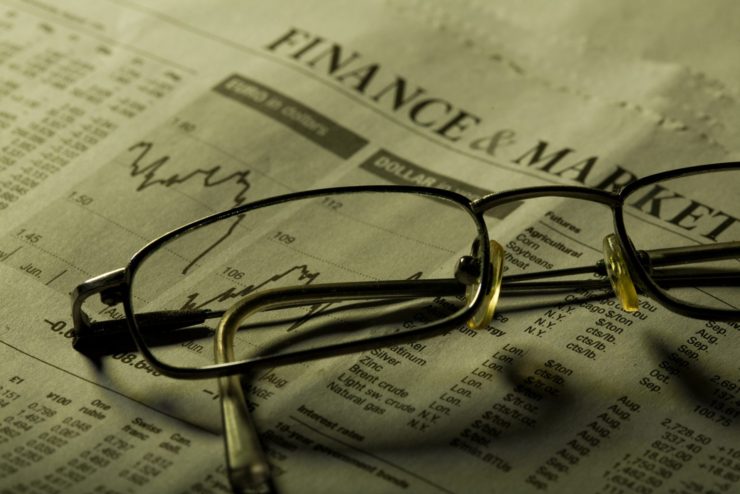Recession? Who Cares?
October 17, 2022
In the past several months, the financial world has been fixated on whether the U.S. economy is in a recession or whether one may be imminent.
So, are we in a recession according to the technical definition, or are we waiting for more economic indicators to line up according to the NBER? Why should we care? More on that later. But first, we’ll explore the two definitions of a recession.
Following two consecutive quarters of negative GDP growth, many economists have proclaimed that the economy is “technically” in a recession. However, others, including Federal Reserve Chairman Jerome Powell, ascribe to the National Bureau of Economic Research’s (NBER) broader definition of a “significant decline in economic activity” spread across the economy, which according to indicators at the time of this writing, has not yet occurred.
So, which is it? Are we in a recession according to the technical definition, or are we waiting for more economic indicators to line up according to the NBER? Why should we care? More on that later. But first, we’ll explore the two definitions of a recession.
The Traditional “Technical” Definition of a Recession
Five decades ago, economist Julius Shiskin came up with the “technical” definition of a recession as two consecutive quarters of negative GDP growth. Though his original definition included several other rules used to corroborate the markings of a recession, those fell off over time, leaving the truncated “two consecutive quarters” definition as the primary rule to follow. Shiskin’s theory relied on data that shows that if GDP shrinks for two quarters, the economy has serious underlying problems.
Though the rule has tracked most recessions correctly, many economists feel the rule is too narrow and rigid, not accounting for many other factors, including persistent job losses.
The Economic Panel Definition of Recession (NBER)
The NBER, consisting of a panel of economic experts, is considered the authority on determining whether the economy is in a recession. Its definition is much broader than Shiskin’s rule, pointing to a “significant decline in economic activity” spread across the economy that lasts for more than a few months.
Using multiple data points, including consumption, manufacturing, payroll, and personal income, the panel considers economic changes that occur over months or years to determine a recession’s starting and ending dates.
While the NBER’s version may provide more verifiable evidence of a recession, it relies entirely on months of hindsight, alerting us long after the start or potentially even the end of a recession. But of course, that’s what economists do—report on events that have already happened.
However, NBER’s more extensive data mining and analysis produced a different finding than the “technical” definition that declared the 2022 first-quarter GDP as negative. Based on much of the underlying data, the NBER found that the economy was relatively healthy and did not fit the definition of a down quarter.
Don’t Let the Definition of a Recession Define How You Should Invest
So, now you know how these determinations are made, but as a long-term investor, you really shouldn’t care. If you have a long-term orientation and maintain a historical perspective of recessions and their impact on the stock market, you would know there is not much to fear. Recessions have come and gone for centuries. Since 1945 , the U.S. economy has experienced 13 recessions. Yet, during that time, the S&P 500 gained an average of 11.12% per year. That means if you invested $100 in the S&P 500 at the beginning of 1945, your investment would have grown to more than $354,000 at the end of 2022 (assuming you reinvested all dividends).
Drilling down a bit more, you will find that the S&P 500 has risen an average of 1% during all recession periods since 1945. The market has followed a common pattern of topping out before the start of a recession and bottoming out before its conclusion. While the S&P 500 declined an average of 8.8% during the last four recessions, it has posted positive returns in over half the 13 recessions since 1945. So, for investors, the worst is generally over for the markets before it’s over for the economy.
Key Take Aways for Investors
The Stock Market is Forward-Looking, While Economic Analysis is Backward-Looking
Generally, by the time economists figure out we are in a recession, we may already be coming out of it. Stocks turn down in anticipation of a recession. Stocks then turn upward as a recession nears the cycle’s bottom. The key takeaway is that the bottom of a recession is a great time to be invested in stocks.
But if investors listened to economists, how would they know the economy is in a recession, much less when it is bottoming? Except for what they’re feeling in their wallets, they wouldn’t for certain. The current bear market in stocks is telling us we are in or headed for a recession. According to Morningstar, bear markets have accompanied recessions 83% of the time. As it has done during every recession in the past, the market will likely start a sustained recovery in anticipation of its bottom.
We Also Know That Bear Markets are Always Followed by More Enduring Bull Markets
Investors who try to avoid the worst of market downturns by attempting to time the market often miss out on the best days, which occur near market bottoms. In doing so, they lock in their losses which can take much longer to overcome than if they had remained in the market.
Recessions come and go. Since 1945 the average recession has lasted ten months. That’s a tiny blip for investors with a long-term time horizon. The data shows that the longer your investment time frame, the more positive periods you will experience in the market. While you will experience some negative periods, they have been far exceeded by positive periods.
Time in the Market Beats Timing the Market
The final and crucial takeaway is that time in the market matters far more than trying to time the market. If you can hold steady and endure the ups and downs, you’ll likely benefit from the inevitable upswings and best market days that are yet to come.
As we’ve noted before, investing has a lot more to do with establishing reasonable expectations about the market and then using the best strategies to reach your goals; rather than relying on headlines and media prognostications to make investment decisions. We firmly believe that trying to predict and time market movement back and forth should never be a part of your investing strategy.
At Williams Asset Management, we pride ourselves on helping clients navigate through bear markets with confidence, helping them to stay even keeled emotionally and sticking to the plan.
Whether you are currently working with a financial advisor or are looking for one who can do the same for you, the advisors at Williams Asset Management are here to help. Simply Contact Us to learn more about your opportunities.


